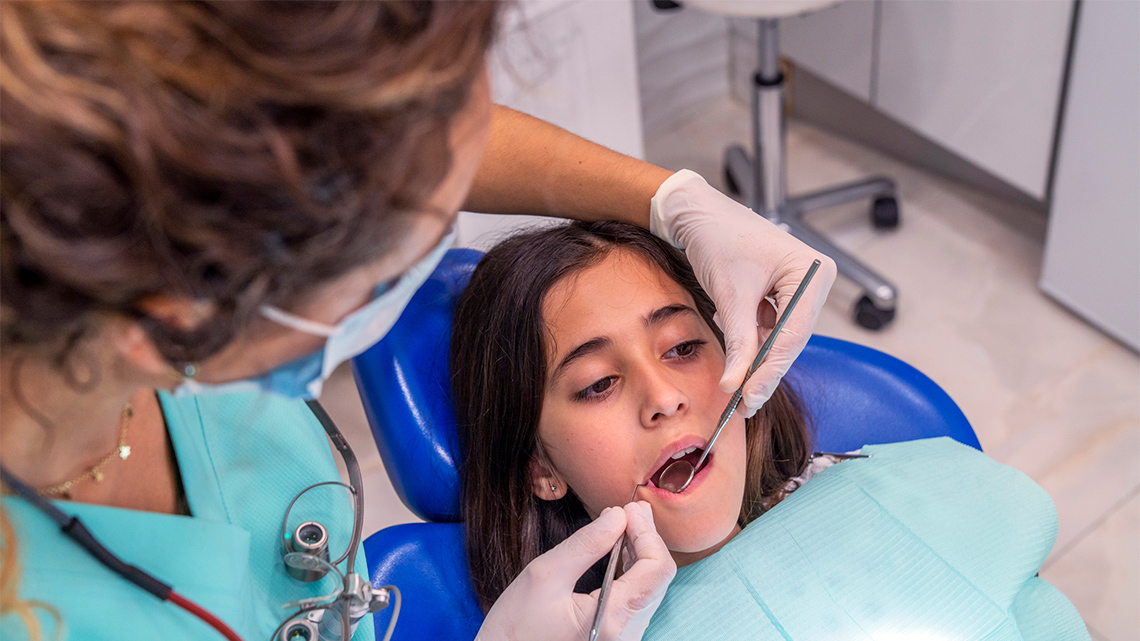Minds On
Oral health

What is oral health?
Oral health is about making decisions to keep our teeth and mouth healthy.
Problems with teeth or gums can be painful, can make it difficult to eat, and can affect our appearance.
Did You Know?
Did you know?
Oral health problems can also lead to health problems that affect other parts of the body, like the heart, lungs, and the digestive system.
Press ‘Digestive System’ to learn more details.
The digestive system uses many parts of the body that work together to break foods and liquids down into small pieces to give energy to the body.
We can keep our teeth healthy by brushing, flossing, and going to the dentist for regular checkups.
Brainstorm
Healthy or unhealthy?
What do you already know about healthy and unhealthy choices when we refer to eating, brushing, and flossing?
Brainstorm your ideas! Think about your own oral health choices as well.
Complete the My Healthy Choices in your notebook or using the following fillable and printable document. If you would like, you can use speech-to-text or audio recording tools to record your thoughts.
| My healthy choices | Why is this healthy? |
|---|---|
| I brush after every meal. | This is healthy for my teeth because it keeps them clean. |
Press the ‘Activity’ button to got to the My Healthy Choices Activity.
Action
Oral hygiene
Hygiene means to keep something clean and healthy.
So, oral hygiene is keeping the mouth clean and healthy.

A few healthy oral choices include:
- brushing teeth properly
- flossing teeth everyday
- not having too many sugary snacks
- going to the dentist regularly
practising good oral hygiene leads to good oral health. Poor oral health can cause problems with our overall health.
Unhealthy choices can lead to too much plaque in the mouth, which can cause infections.
Plaque is the sticky bacteria that is left behind after eating.
Too many sugary snacks can also cause cavities.
A cavity is a hole that forms when a tooth breaks down. Over time, cavities can grow bigger and deeper.
Habits

It is important to begin good oral hygiene habits at a young age, and to continue them as we grow older.
Explore this video entitled “Dr. Cheddar: Tooth or Consequences” to learn more about caring for our teeth.
What are three important pieces of advice that Dr. Cheddar gives about taking care of our teeth?
Record your response using a notebook or another method of your choice.
What do you eat?

Being careful about what we eat can also help.
What types of foods should we eat only in small portions, or not all the time?
Press ‘Let’s Check!’ to explore foods to eat once in a while.
Foods we should eat in small portions or occasionally: candy, soda drinks, chips, cookies, and ice cream.
What kinds of food should you eat in larger portions, or more often?
Press ‘Let’s Check!’ to learn what to eat more often.
Foods we should eat in larger portions or more often: fruits and vegetables.
Which one?
Check out each type of food, and choose whether it is a food that should be eaten in small or large portions.
Select the correct answer, then press 'Check Answer' to see how you did.
Return to your brainstorming list in the Minds On section. Can you add any new information to your list?
Consolidation
Let’s review!
Let’s review our oral health terms we explored in this learning activity.
For each term, select the corresponding definition.
Oral health habits

Create a poster that describes the benefits of healthy oral health habits. You may use any method of your choice for the poster.
Be sure to include the following when creating the poster:
Poster checklist
Reflection
How do you feel about what you have learned in this activity? Which of the next four sentences best matches how you are feeling about your learning? Press the button that is beside this sentence.
I feel…
Now, record your ideas about your feelings using a voice recorder, speech-to-text, or writing tool.


